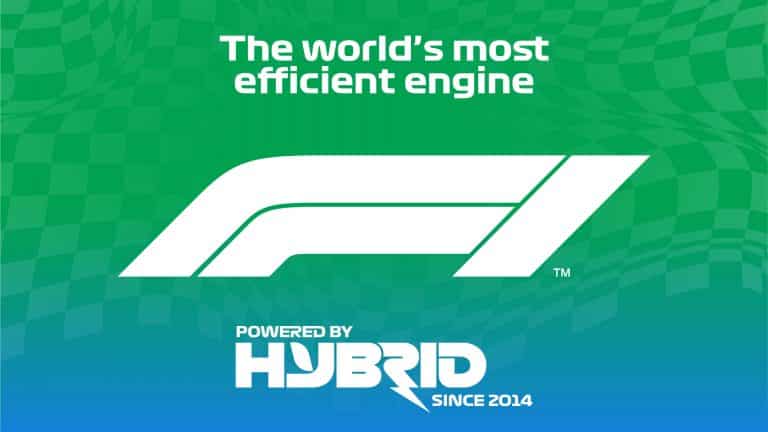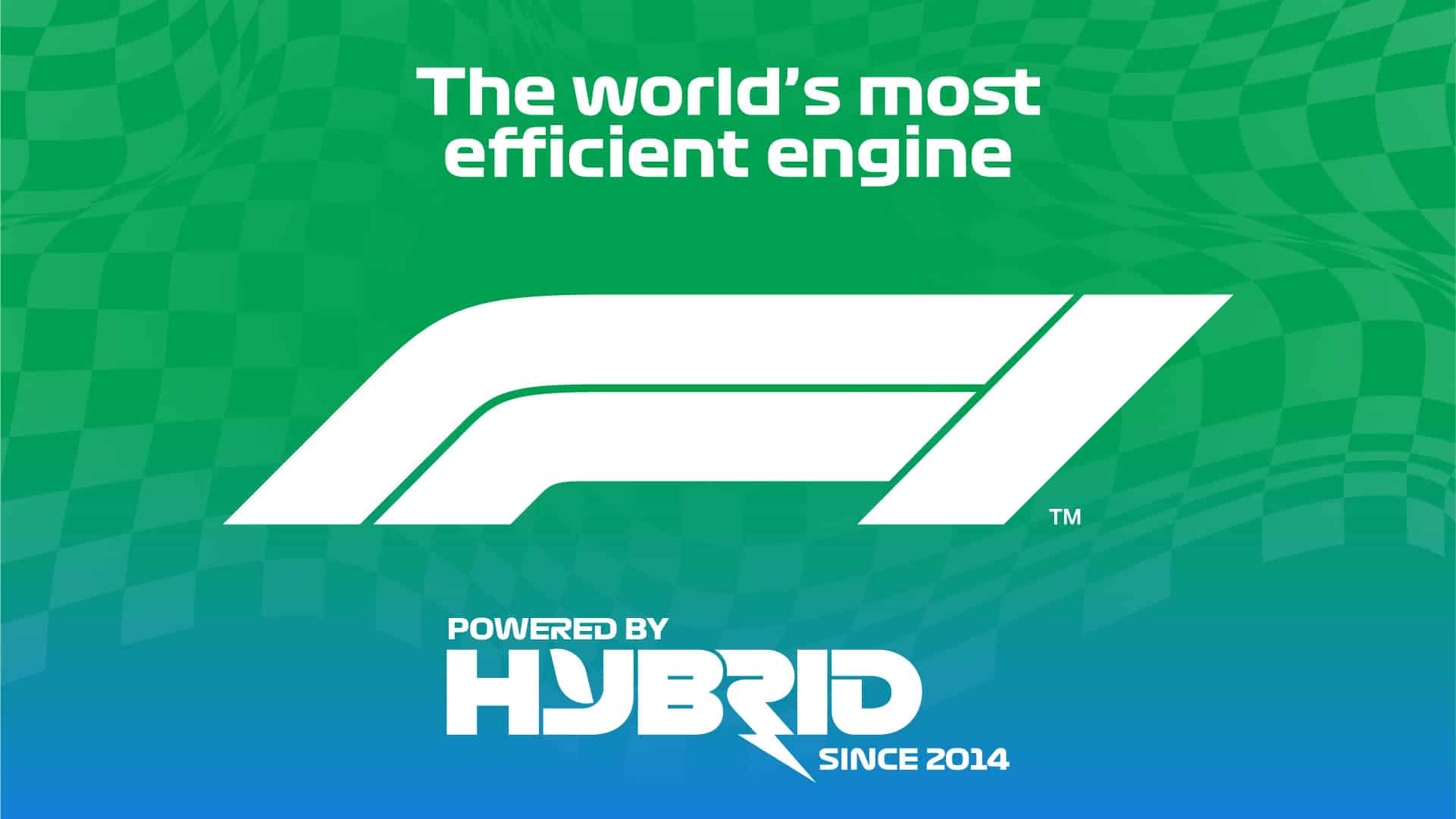
FIA and Formula 1 unveil new 100%
sustainably fuelled hybrid engine by 2025
Formula 1 and ARAMCO (the Saudi national hydrocarbons company and main partner of the Circus) are trying to introduce 100% sustainable fuels by the middle of this decade, as part of the move towards being Net Zero Carbon by 2030. Just last year, the FIA announced the use of E10 biofuels in Formula 1 from 2022.
Despite the ambition of the project, both in terms of applicability and maintenance of the old F1 charm (fully focused on engine noise and the smell of gasoline), this target could have a huge impact on both the sport and the world of transportation.
The F1 Future in few words: In 2025, F1 aims to unveil the new Formula 1 engine which will be the second generation hybrid power unit after the first one introduced in 2014 (starting point of the Mercedes dominant Era), combined with a new pack of aerodynamical regulation. The new PU will be carbon neutral and powered by a drop-in advanced
sustainable fuel.
The aim is to make this fuel available to the world: in fact, talks with fuel companies are in advanced phases. This target will surely have a global impact, adding to the electrification path that could have a far bigger and beneficial impact for the environment.
100% 2025 sustainable fuels will reduce the environmental impact of all new and existing ICE based road-cars globally (estimated to be 1.4bn on the road by 2030, only 8% of which are expected to be purely electric) – and have a potential impact on some of the largest emitting sectors of heavy road transport, shipping, and aviation.
Liberty Media’s position as part of the F1 sustainability push: The current F1 hybrid power unit is the most efficient on the globe, delivering more power using less fuel, and therefore CO2, than any other car. This clearly could be a game-changing moment. F1’s Chief Technical Officer Pat Symonds believes that despite in 2022 we will already see the new generation of Formula 1 cars running on ‘E10’ fuel (a mixture of 90% fossil fuel and 10% renewable ethanol, which is already available to many motorists at petrol pumps throughout the world), F1 and ARAMCO are on track to
achieve the ambitious 2025 target. F1’s sustainable fuels will feature an advanced component which will achieve greenhouse gas emissions savings relative to fossil-derived petrol of at least 65%.
Obviously, it remains a big challenge to turn this innovation into suitable mass production.
Talking about speed, ethanol is not the best fuel for high performance. Therefore, F1 and ARAMCO are synthesizing a high-performance, fully sustainable fuel. In Symonds words “This is something that is both difficult to do and hard to do in the quantities we (as F1 Circus) need. So, it is quite an ambitious stretch that we’re making.” At this point, one crucial question could be why not to develop electric engines, since the big push worldwide towards the electrification of cars, with several governments setting new laws to encourage the change. Symonds believes that “all F1 engineers feel that electric vehicles are good in a small-ish vehicle, and an urban environment whereas they’re not good when you need a lot of power, and you need that power to not take up a lot of room.”
Plus, important research conducted by the Institute of Mechanical Engineers, London, last year showed that an engine powered by renewable energy would emit
58g/km across its whole lifespan, versus the 45g/km for a fully sustainable petrolpowered internal combustion engine car. Finally, it’s interesting to understand why and how this is relevant outside F1 world. The circus is currently working with fuel companies to help create the 100% advanced sustainable drop-in fuels with an eye on then scaling up production to make these fuels available for commercial motorists and the wider transport industry. Despite this challenging goal, Symonds describe himself as “massively excited” to be onboard on the journey that have been on for 70 years in Formula 1
of just producing more and more efficient engines.
Are the F1 Teams responding to the challenge? The teams are already on set to the game. Williams have set themselves the ambitious target of becoming climate positive by 2030, as they launch a comprehensive sustainability strategy. The team’s strategy brings their emissions reduction target in line with the below 2C target of the Paris Climate Agreement and UN Climate Change Global Agenda. As a result, Williams is the first F1 team to be a signatory of the UNFCCC Sports for Climate Action Framework.
Ferrari and McLaren (in collaboration with Gulf Oil, in honor of which the British team had brought an incredible redesigned delivery during the Monaco 2021 GP Weekend) are both aligned with the Williams statement. Now it’s all about seeing if (and when) the two major players that have shared the championship (both drivers and constructors) in the last ten years, Red Bull and Mercedes, will join forces with the other teams to this incredible and exciting sustainable journey.
Author: Matteo Venturi
FIA and Formula 1 unveil new 100%
sustainably fuelled hybrid engine by 2025
Formula 1 and ARAMCO (the Saudi national hydrocarbons company and main partner of the Circus) are trying to introduce 100% sustainable fuels by the middle of this decade, as part of the move towards being Net Zero Carbon by 2030. Just last year, the FIA announced the use of E10 biofuels in Formula 1 from 2022.
Despite the ambition of the project, both in terms of applicability and maintenance of the old F1 charm (fully focused on engine noise and the smell of gasoline), this target could have a huge impact on both the sport and the world of transportation.
The F1 Future in few words: In 2025, F1 aims to unveil the new Formula 1 engine which will be the second generation hybrid power unit after the first one introduced in 2014 (starting point of the Mercedes dominant Era), combined with a new pack of aerodynamical regulation. The new PU will be carbon neutral and powered by a drop-in advanced
sustainable fuel.
The aim is to make this fuel available to the world: in fact, talks with fuel companies are in advanced phases. This target will surely have a global impact, adding to the electrification path that could have a far bigger and beneficial impact for the environment.
100% 2025 sustainable fuels will reduce the environmental impact of all new and existing ICE based road-cars globally (estimated to be 1.4bn on the road by 2030, only 8% of which are expected to be purely electric) – and have a potential impact on some of the largest emitting sectors of heavy road transport, shipping, and aviation.
Liberty Media’s position as part of the F1 sustainability push: The current F1 hybrid power unit is the most efficient on the globe, delivering more power using less fuel, and therefore CO2, than any other car. This clearly could be a game-changing moment. F1’s Chief Technical Officer Pat Symonds believes that despite in 2022 we will already see the new generation of Formula 1 cars running on ‘E10’ fuel (a mixture of 90% fossil fuel and 10% renewable ethanol, which is already available to many motorists at petrol pumps throughout the world), F1 and ARAMCO are on track to
achieve the ambitious 2025 target. F1’s sustainable fuels will feature an advanced component which will achieve greenhouse gas emissions savings relative to fossil-derived petrol of at least 65%.
Obviously, it remains a big challenge to turn this innovation into suitable mass production.
Talking about speed, ethanol is not the best fuel for high performance. Therefore, F1 and ARAMCO are synthesizing a high-performance, fully sustainable fuel. In Symonds words “This is something that is both difficult to do and hard to do in the quantities we (as F1 Circus) need. So, it is quite an ambitious stretch that we’re making.” At this point, one crucial question could be why not to develop electric engines, since the big push worldwide towards the electrification of cars, with several governments setting new laws to encourage the change. Symonds believes that “all F1 engineers feel that electric vehicles are good in a small-ish vehicle, and an urban environment whereas they’re not good when you need a lot of power, and you need that power to not take up a lot of room.”
Plus, important research conducted by the Institute of Mechanical Engineers, London, last year showed that an engine powered by renewable energy would emit
58g/km across its whole lifespan, versus the 45g/km for a fully sustainable petrolpowered internal combustion engine car. Finally, it’s interesting to understand why and how this is relevant outside F1 world. The circus is currently working with fuel companies to help create the 100% advanced sustainable drop-in fuels with an eye on then scaling up production to make these fuels available for commercial motorists and the wider transport industry. Despite this challenging goal, Symonds describe himself as “massively excited” to be onboard on the journey that have been on for 70 years in Formula 1
of just producing more and more efficient engines.
Are the F1 Teams responding to the challenge? The teams are already on set to the game. Williams have set themselves the ambitious target of becoming climate positive by 2030, as they launch a comprehensive sustainability strategy. The team’s strategy brings their emissions reduction target in line with the below 2C target of the Paris Climate Agreement and UN Climate Change Global Agenda. As a result, Williams is the first F1 team to be a signatory of the UNFCCC Sports for Climate Action Framework.
Ferrari and McLaren (in collaboration with Gulf Oil, in honor of which the British team had brought an incredible redesigned delivery during the Monaco 2021 GP Weekend) are both aligned with the Williams statement. Now it’s all about seeing if (and when) the two major players that have shared the championship (both drivers and constructors) in the last ten years, Red Bull and Mercedes, will join forces with the other teams to this incredible and exciting sustainable journey.
Author: Matteo Venturi
RELATED
Regulatory Developments in ESG Reporting and Their Implications for Businesses
The focus on Environmental, Social, and Governance (ESG) factors has surged, leading to significant regulatory changes worldwide. Key developments include the EU’s Corporate Sustainability Reporting Directive (CSRD), the US SEC’s...
Read MoreThe Earthshot Prize 2022
The Earthshot Prize 2022 The Earthshot prize is an award given to five winners that created some projects that could help our planet face some of the most important challenges...
Read More

